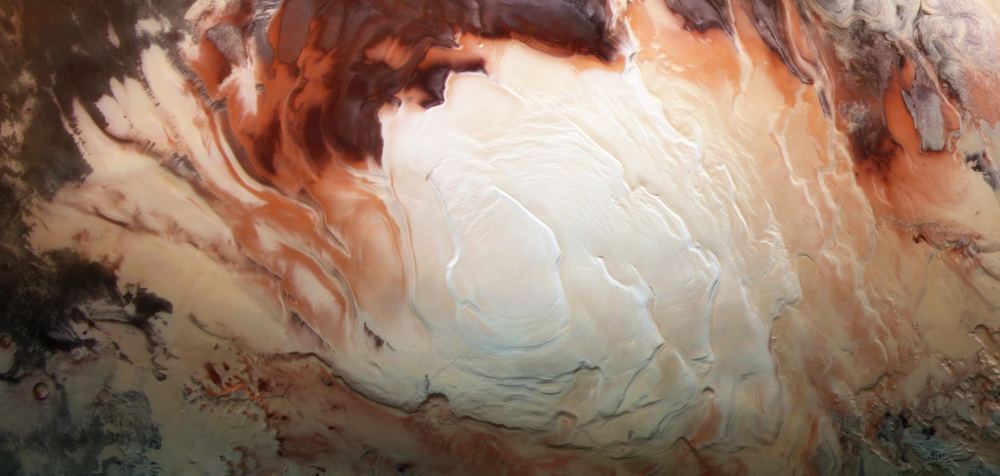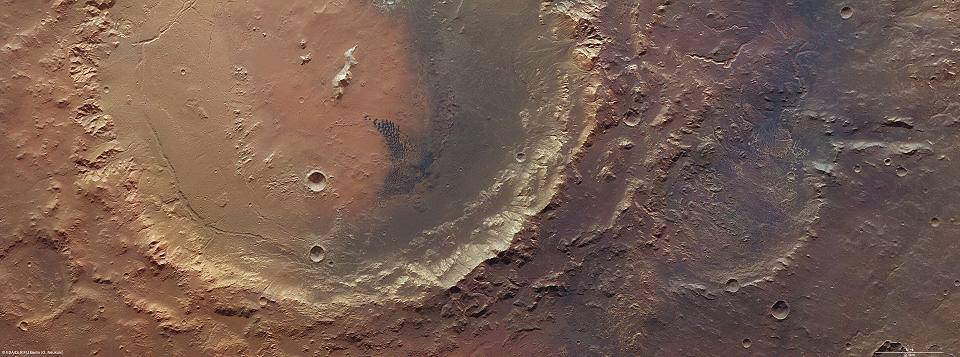[/caption]
In the southern highlands of Mars, Eberswalde crater to be exact, ESA’s Mars Express exploration has pinpointed an area which once held a lake. Although it may have been some 4 billion years ago, the geologic remains – called a delta – are still evident in the new images. This region of dark sediments are a shadowed reminder that Mars once had water.
Formed by an asteroid strike, Eberswalde crater has nearly eroded away with time. After it formed, it was partially obliterated by another impact which shaped 140 km diameter crater Holden. Although this second strike buried Eberswalde with ejecta, 115 square kilometers of delta area and feeder channels survived. These channels once were the arteries that pumped water along the surface to pool in the crater’s interior, forming a lake. As they carried water, they also carried sediments and – just as on Earth – left their mark. With time, the water dried up and even more sediments were carried along by the wind, exposing the area in vivid relief.
NASA’s Mars Global Surveyor spacecraft spied the delta in earlier missions, giving even further solidification that Mars was once a wet world. While Eberswalde crater and Holden crater were once a part of a list of possible landing sites for the Mars Science Laboratory, Gale crater was selected as the Curiosity’s landing site, given its high mineral and structural diversity related to water. But don’t count this wonderful, wet confession of a lake out forever. Thanks to high mineral diversity and suggestive structure, we’re sure to visit the delta of Eberswalde and Holden again, from orbit or with another landing mission.
Original Story Source: ESA News.


